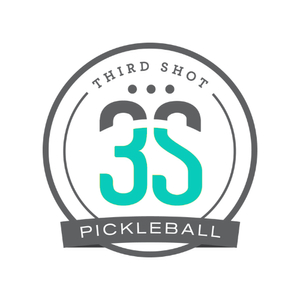If you are like most people before you start playing a game, you hit some balls with your partner or opponents; probably a bunch of dinks, maybe a few volleys and smashes, some forehands and backhands from the back of the court, and possibly some drops and lobs.
But how deliberate is your warm-up, really? How focused are you during it? Again, if you're like most people, the answer is probably not very. You probably hit a few balls casually back and forth, maybe even while having a conversation. You are likely hitting a quality of ball that will hurt you in a game – too high, for example but don't think too much about it. Let's look at why the warm-up matters and what you can do to make it great.
First, whether you are preparing for a match or a lesson, the warm-up is an opportunity to prepare both your body and your brain. Not only can you get sweating a little bit, but you can start to build confidence in yourself and set the tone for what's about to come. Here are some tips to make your warm-up awesome:
Hit all the shots you'll need. Don't focus on your favorite shots or the ones that you hit best. Make sure that all the shots you'll be using in the game will get some love. That means drops and drives, dinks and volleys, smashes, lobs, serves, and returns. And these should be hit not just with your forehand! Your backhand isn't going to magically get better by avoiding it. Using a systematic approach is a good way to do this.
For example, start up close and work your way back. Dinks and reflex volleys are a great idea. Then back up a little and hit some balls from around ¾ court (also known as the transition zone). These may be a little uncomfortable, but you'll need these shots in a game, so you might as well warm them up now. Then move back to the baseline where you can hit drops and drives (if your partner is at the net), or get the feeling for hitting deep balls like a return of serve. You better hit some overhead smashes too – don't be afraid to ask your partner for some lobs.
Have clear targets. Where, exactly, are you aiming your serve? How about your drop? Where do you want your volley to land? Whether you're trying to keep the ball low, hit it deep, or to the sideline, it's important that you have a clear target in mind each time you hit the ball even in the warm-up phase. After all, you're going to be aiming for a specific spot when you're playing, right? — might as well start now.
Don't miss (much). In addition to getting physically warm, the warm-up is a chance to build confidence. If you're hitting every third or fourth ball out of bounds, you're probably not going to feel great once you get to 0-0-2. Give yourself nice big targets at first and a decent margin for error. It's really important to initially hit the ball at a speed that you're super consistent with. As you get loose and start making those shots, you can make the targets a little more precise and start hitting harder too.
Coaches, you should also make the warm-up section of your lesson meaningful. We spend a lot of time with this in Instructor 2: Developing Recreational Players. While you shouldn't be teaching new skills in the warm-up (reinforcing previously learned skills is fine), you should give your players specific tasks and connect those tasks to the game: "Let's see if one team can hit 20 balls in a row.
Can you have a great warm-up and still play poorly? Of course. But a thoughtful, focused warm-up increases the likelihood that you’ll perform well when the game gets going. And with a little care and attention to detail, it’s really not that difficult to do.
— Mark Renneson





